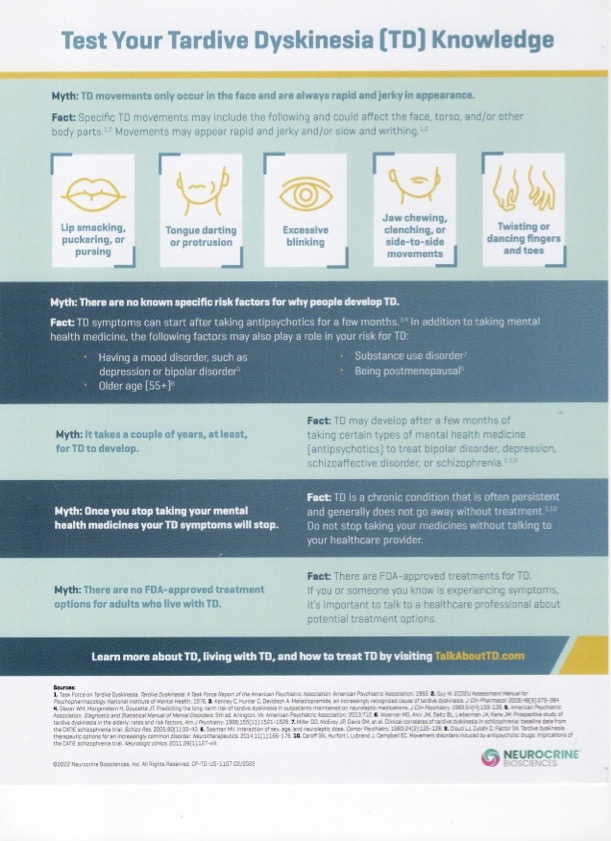Tardive Dyskinesia
Want to find out more about TD (Tardive Dyskinesia)?
Read below or download the PDF
What is TD?
Tardive dyskinesia (TD) is a movement disorder that causes a range of repetitive muscle movements in the face, neck, arms and legs. TD symptoms are beyond a person’s control. These symptoms can make routine physical functioning difficult, significantly affecting quality of life.

Although sometimes associated with conditions such as schizophrenia, TD primarily occurs as a side effect of long-term use of certain medications. It can become a permanent condition even after a person stops taking the medication.
Symptoms of TD can include:
- Jerking hand and leg movements
- Neck twisting
- Difficulty swallowing
- Eye blinking and grimacing
- Lip smacking and involuntary tongue movements
TD symptoms typically occur after several years of taking antipsychotic medications, although they can emerge within just a few months. TD is also related to prolonged use of medications for nausea, and medications that treat neurological disorders, such as Parkinson’s disease.
Anyone taking an antipsychotic may develop TD, but the risk can be higher for certain people.
Risk factors for TD:
- African descent
- Diabetes mellitus
- Family history of TD
- Female
- Older age
- Substance use
Here is a recent article about TD challenges in rural America:
Additional resources/fact sheets can be found HERE.

Life with Tardive Dyskinesia
A video from the National Organization for Tardive Dyskinesia
In this video, people share their stories of what it's like to live with tardive dyskinesia and how this disorder affects their day-to-day life.